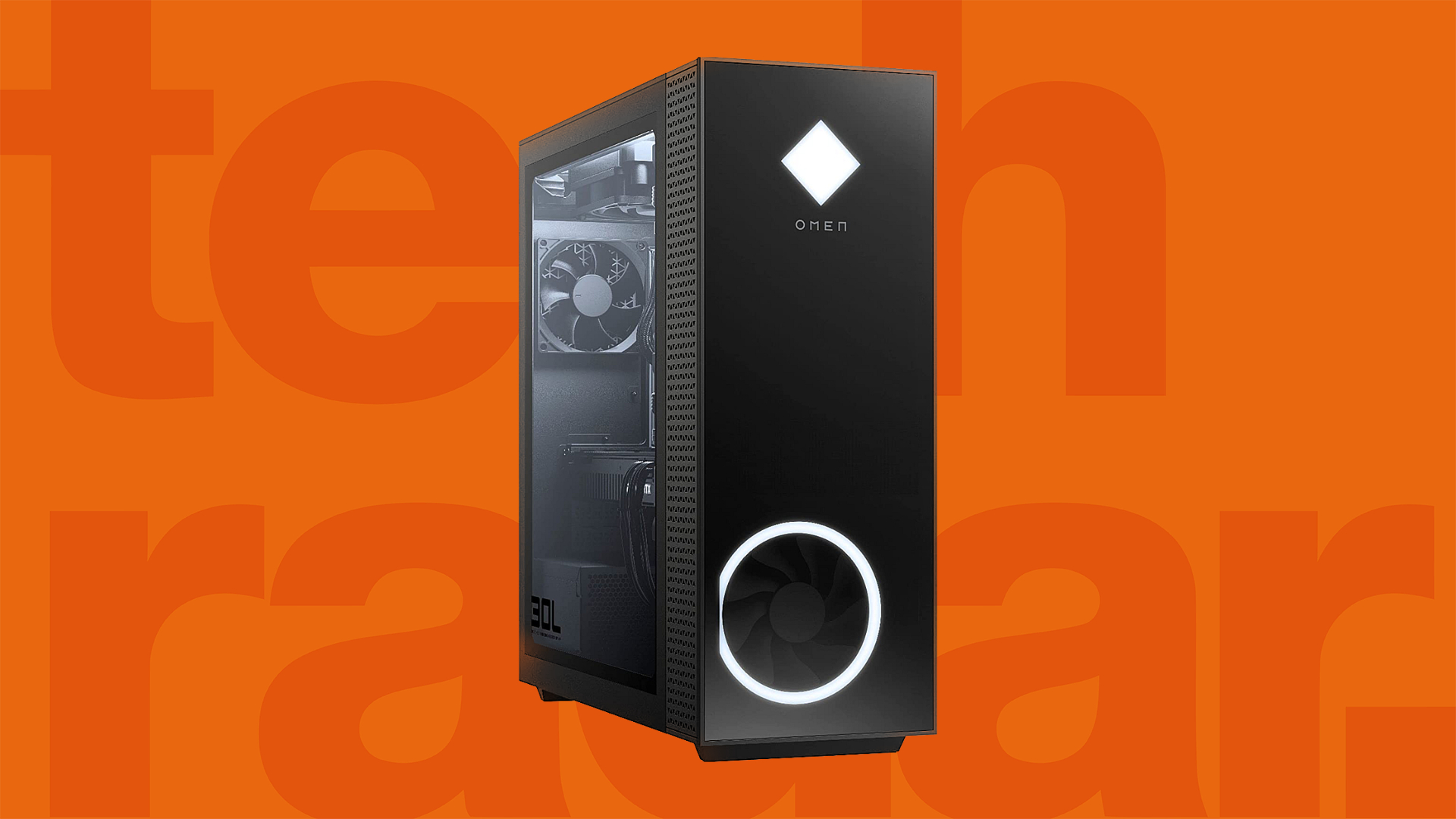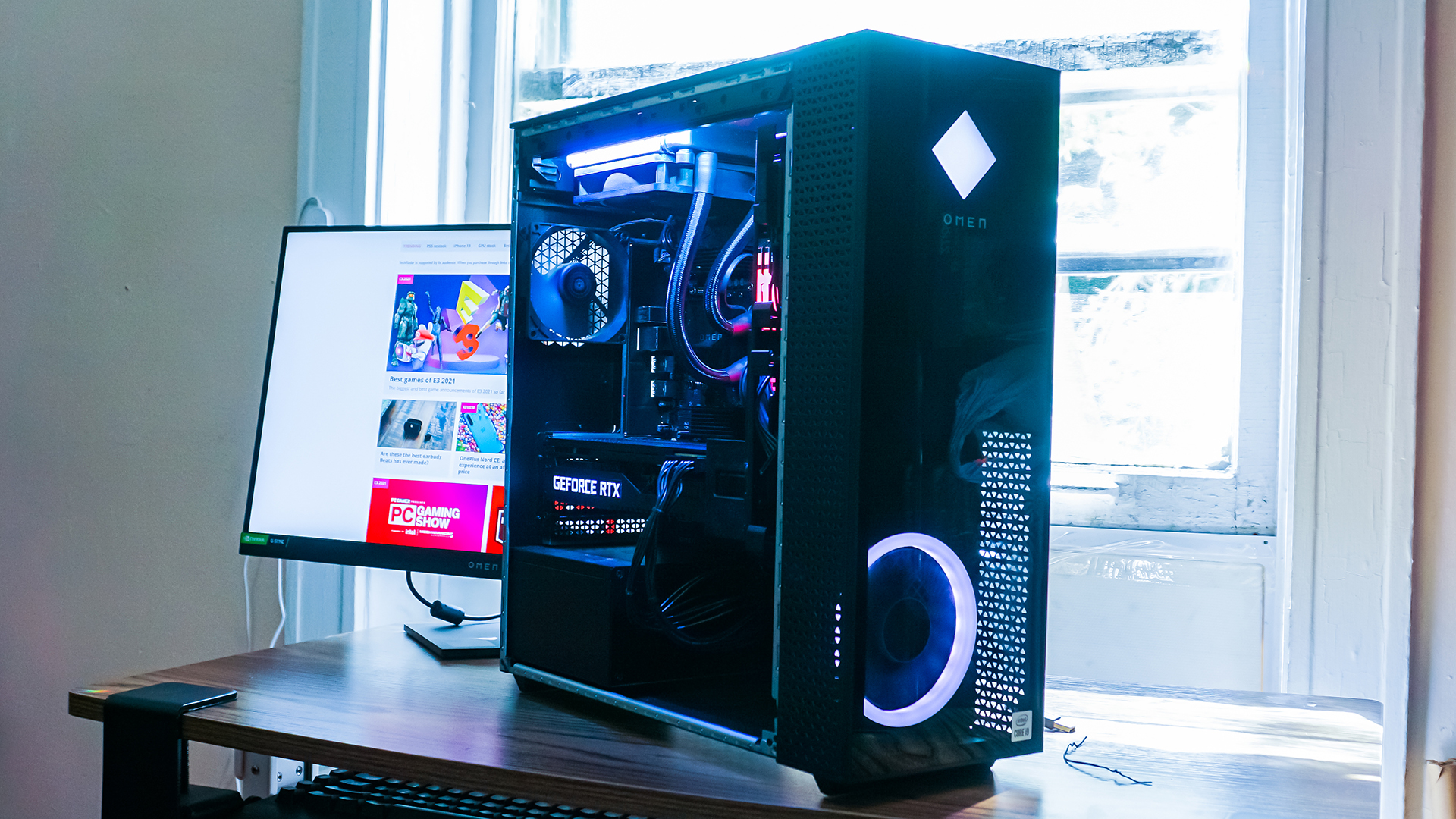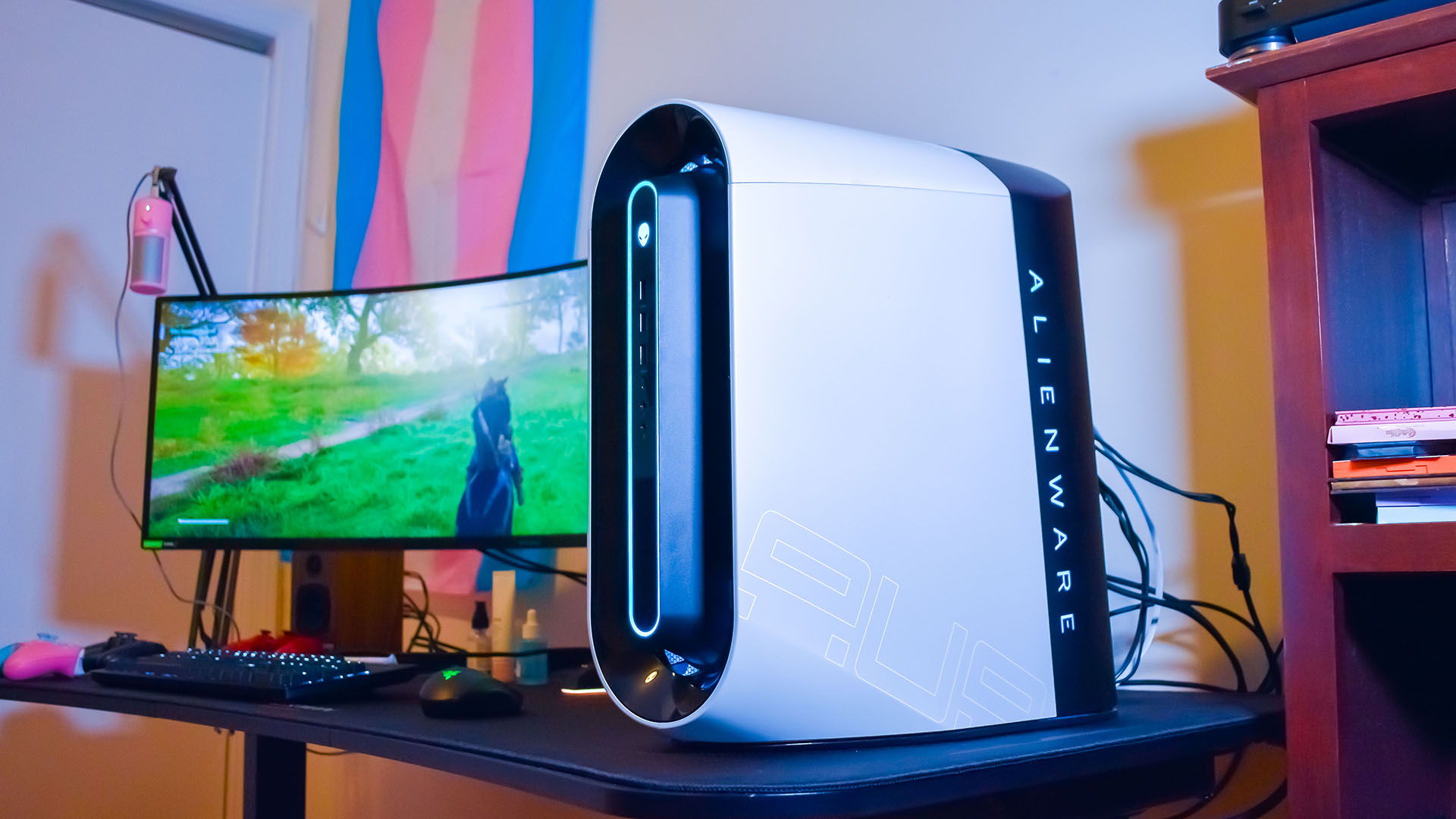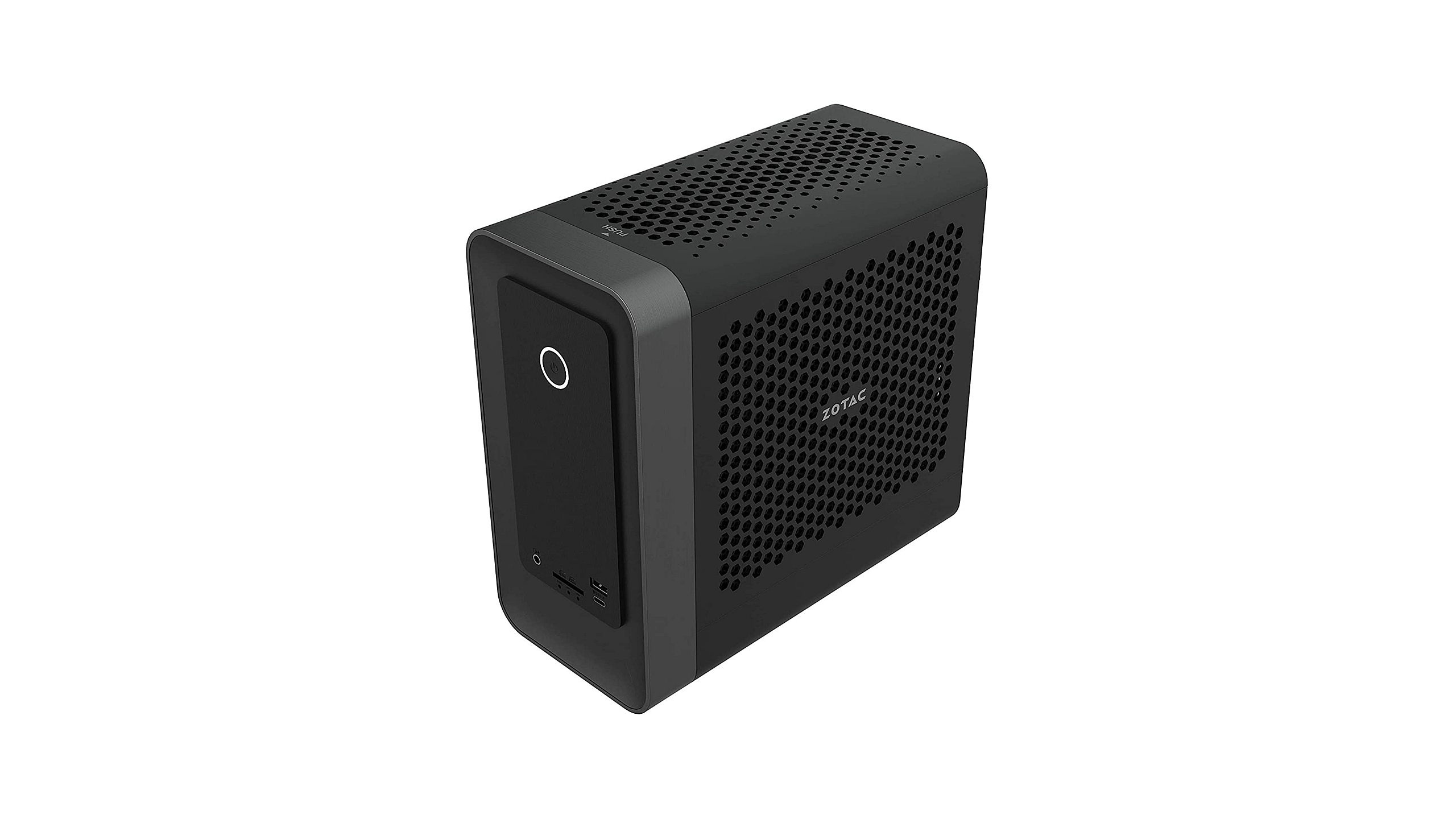Best PC for VR of 2024
Immerse yourself in new experiences with the best PC for VR
The best PC for VR will let you effortlessly jump into the world of virtual reality.

1. Best overall
2. Best budget
3. Best for professionals
4. Best for expandability
5. Best for size
6. FAQs
7. How we test
From medicine to manufacturing, gaming to retailing, business meetings to social meetups, virtual and augmented reality technology is changing industries and transforming how we interact with the real and digital world.
But, like the best VFX software, best video editing software, and eve the best 3D modeling and rendering software, running virtual reality is resource-intensive.
Without the right machine, you’re wasting time waiting for apps to load, experiencing friction in the creative process, and fighting disconnections with co-workers and friends.
So, to get the optimal VR experience, you need a desktop machine with more power than your standard computer or laptop designed for intense graphics processing and lightning-fast processing power. Ideally, When looking for the best PC for VR, you should look for PCs built with the best processors, the best graphics cards, and more.
Fortunately, even the best cheap graphics cards, like the Nvidia GeForce RTX 2060, can get you into the best VR games, and many of the best PCs for VR gaming are more affordable than ever.
We’ve tested the best PCs for VR across a range of specs and budgets for ultimate virtual reality performance to make your choice easier than ever.
Best PC for VR of 2025 in full:
Why you can trust TechRadar
Best overall

Specifications
Reasons to buy
Reasons to avoid
Gaming PCs are resource-intensive in CPU, RAM, and GPU, so they are very well suited to virtual reality. This sleek machine from HP, called the Omen 30L is one of the best PC for VR packages. It packs some seriously fast components into a narrow, elegant chassis with nice design elements that enhance its aesthetics.
This VR PC is a consumer market PC rather than a workstation so you will pay a fair price. We went with the AMD Ryzen 5 with six cores and 16GB of RAM. It features a fast PCIe SSD and a powerful 1TB hard drive for plenty of room for VR development and apps. Other configurations are available at retail, such as one with a 2TB SSD plus 2TB HDD with 64 GB RAM.
Its semi-transparent tempered glass side panel shows off these features but at the same time, allows easy access to the components without needing tools. It has an array of USB ports -even USB 3.2 Gen 2 at 10Gbps - so hooking up your VR positioning sensors will be easy. It's a shame, however, that the USB-C port placement is at the back.
Read the full HP Omen 30L review.
Best budget

2. CyberPowerPC Gamer Xtreme VR Gaming PC (GXiVR8060A11)
Specifications
Reasons to buy
Reasons to avoid
While it's tempting to build your own PC for VR, it can be more affordable to look for pre-built machines due to the lower prices manufacturers can obtain on GPUs. CyberPowerPC is one such system builder that uses brand name components on their systems, from the case to the power supply as well as RAM and GPU. As a best seller with the Amazon Choice tag, along with its positive reviews, we believe this is an excellent contender for this category.
More importantly for one of the best PCs for VR, CyberPowerPC tested the system to ensure it met the specifications required to be used with HTC's VIVE and Facebook's Oculus Rift headsets.
The case of this gaming PC is typical black with RGB LEDs and tempered glass sides. You will find a Gigabyte b560 ds3h ac motherboard with 8GB of RAM, a six-core Intel i5 11400F processor, and an NVIDIA GeForce RTX 2060 graphics card with 6GB of video memory inside this system.
In terms of ports, there are six USB 3.1 ports, two USB 2.0, a Gigabit Ethernet wired network connection, and onboard "AC" Wi-Fi. Obviously, a keyboard and a mouse are also provided. You may want to consider upgrading to 16 GB RAM if you want to take advantage of dual-channel speeds.
Best for professionals

Specifications
Reasons to buy
Reasons to avoid
In terms of design, the Alienware Aurora series stands out because it ditched the "square box design with a glass side panel" common to other gaming PCs in favor of a spaceship inspired design. Those who work in VR design will appreciate its futuristic look.
When upgrading its Intel i7 offering -there is a sibling with AMD Ryzen for those who prefer AMD CPUs- Alienware chose to stick with the same 11700F CPU with liquid cooling and the same beefy Nvidia RTX3080 graphics card with 10GB of VRAM, while increasing storage capacity and RAM. Compared to the 16 GB of memory in its predecessor, the R12 went up to 64GB of RAM, and storage was boosted from a 512GB SSD plus 1TB HDD to a 1TB SSD plus a 2TB HDD, all for the same initial retail price.
However, the R11 is more likely to be found in retail than the R12, so we included specs for both as only RAM and storage are differentiating factors. The design of both is the same.
In keeping with the spaceship aesthetic, Alienware Aurora R12 comes in two colors: "Lunar Light" and "Dark Side of the Moon." Its air flow is also guaranteed thanks to well-engineered intakes and exhausts.
A front-panel USB-C 3.2 Gen 2 port, as well as three USB-A ports, make it easy to connect VR headsets without having to reach around the back like with other PCs. It has plenty of USB ports on the back, including a USB-C port and 10 USB-A ports. We were pleasantly surprised by the inclusion of 2.5G Ethernet instead of Gigabit Ethernet, the now-older standard. A beefy Nvidia 3080 display card provides three DisplayPort connections as well as HDMI 2.1.
Read the full Alienware Aurora R11 review.
Best for expandability

4. Lenovo ThinkStation P620
Specifications
Reasons to buy
Reasons to avoid
Lenovo's ThinkStation P620 is a compact workstation - and one of the best VR PCs when space is tight. It's a little smaller than your typical ATX enclosure, but it comes with a flexible design that will keep you productive for years to come. Two USB-C connectors are located on the front panel where you can plug your VR headset, and six USB-A connectors are located on the back.
In addition to its faultless interior, where you can change or add cards without using a screwdriver, Lenovo's attention to detail starts right from its front handle. The CPU, an AMD Ryzen PRO 3955WX, is a beast with 16 cores and 3.90 GHz speed that can go as high as 4.30 GHz. Another version is available with a twelve-core 3945WX CPU, which is also suitable for VR use.
The CPU has eight memory channels, which means it can support up to 512 GB of system memory, which can be spread over eight DIMMs of 64 GB. There is also the option to add extra storage to your purchase, for a small price increase, like a beefier 2TB PCIe M.2 SSD. It has the capacity to hold up to five SATA HDDs, which is quite a lot if you fill it with 10TB drives.
Lenovo's online store offers four different configurations: the most affordable has just 256GB of SSD storage and a basic Quadro P620 with 2GB of VRAM, making it totally unsuitable for VR use. So, the more expensive configuration (part number 30E1S0FG00) had to be selected which updated the Ryzen Pro to a 16-core version and upgraded the video card to a NVIDIA Quadro RTX 4000 with eight gigabytes of RAM. The result is that SSD storage jumps to 1TB, which is good news for VR users.
Best for size

5. Zotac Magnus One
Specifications
Reasons to buy
Reasons to avoid
A high-end graphics card is needed to run virtual reality, which limits the size of your PC due to the GPU requirements. Despite this, Zotac has proven that we don't need a huge PC box to enjoy VR.
Its Magnus system is about the size of a shoe box tilted at 90 degrees. A Core i7-10700 CPU and GeForce RTX 3070 LHR graphics card are housed in this 8.3 liter design, in addition to two SSD slots and a 2.5-inch bay. The system we selected has 16GB of DDR4 RAM, a 512GB SSD, and a 1TB hard drive. It is also available in a barebones configuration that requires you to add your own memory, storage, and operating system.
The PC looks stylish and unique thanks to its small size and numerous vent holes on its side. Moreover, its black chassis looks positively elegant, without the fancy led lights of many gaming PCs. With two USB ports in the front and six in the back, you shouldn't have a problem connecting your VR headset and sensors. There are two USB 3.2 type A and one USB 3.2 type C on the front, both capable of 5Gbps, along with an SD card reader and a headphone jack. USB 3.2 Type A Gen 1 and Gen 2 are at the back.
Its connectivity is paramount: there is wired 2.5 Gbps Ethernet and WiFi 6, with two antennas directly mounted on the top back of the chassis. After removing the top cover, you may easily remove the side panels to upgrade its components in the future.
You get top-notch connectivity, a powerful CPU, and a powerful GPU, so what's not to like? Noise, that's what. It's a noisy computer. Multiple fans run at once to dissipate the heat generated by its components, making them audible through the vent holes. However, if you are using headphones, the point is moot. The Oculus Quest and Quest 2 headsets support them, plug the headphones into the audio port.
Experience the future of work with the best business computers and best business VR headsets.
Best PC for VR FAQs
How to choose the best PC for VR
When choosing which PC for VR is best, you'll want to consider a number of factors.
In a business environment, building your own PC is not the best option. It's time-consuming and is not scalable beyond one without placing an additional burden on your IT staff. However, the VR requirements are well within the range of many ready-made PCs, both those designed for gamers and those designed as graphics workstations. In order to start, you need a very fast last-generation processor and one of the best available graphics cards.
There should also be enough ports to plug in the VR headset and any motion sensors needed -even though more are allowed, many experts recommend sticking with three-. Therefore, gaming PCs with beefy graphics cards are suitable for VR use in the professional setting, as are workstations.
In summary, the system requirements depend on the headset you intend to use but suffice it to say that one flagship VR headset like the HP Reverb G2 needs an Intel Core i5, Core i7, or the Intel Xeon E3-1240 CPU (or better) with 8 GB of RAM or more, with 16 GB of RAM being recommended. A DisplayPort 1.3 video out port and USB 3.0 type C ports are also required.
Given the VR headset minimum requirements, we selected systems with 8GB of RAM or more, with Intel i5 or higher CPUs (including AMD Ryzen 5 or higher), and fast SSD storage. Bonus points were awarded to systems with video cards listed at Nvidia´s “VR Ready Solutions” web list of recommended cards, that include the Quadro RTX 8000, 6000, 5000 and RTX 4000 among others.
Why go PC-bound and not solo?
The benefits of virtual reality on a PC are better graphics and a higher processing speed in comparison to a standalone VR system. In this way, developers can create a truly immersive VR experience in high-definition thanks to GPUs and CPUs at the cutting edge of technology, thus enabling VR to develop to its full potential.
Those new to the field might be tempted by the cheaper option: standalone virtual reality headsets. This is because standalone VR headsets include their own processor, memory, and GPU, along with their own batteries, they do not require a PC to deliver a VR experience. However, they have fixed specs and cannot be upgraded. There is still much debate about PC-bound vs. standalone VR, but so far, many users confirm space tracking is more accurate on a PC VR headset than on a standalone unit and that's leaving aside the upgradeability issue altogether.
If you are using the best PC for VR already, you can upgrade it as your or your headset requirements grow, either by adding more RAM or upgrading the GPU. With the industry moving fast, it is easy to get on the wrong train when you're working with portable VR and end up with old equipment or outdated technology.
How we test the best PCs for VR
We test, review, and rate the best PCs for VR across a number of areas - from specs and performance to budget.
The best PC for VR are like the best video editing computers and best video editing laptops - powerful and performance-driven, and we expect to see machines built for VR to live up to the virtual reality promise.
When narrowing down the field, we opted for computers that delivered the best overall value, portability (where that's a factor), as well as those with the most expandable systems - because memory and storage expansion flexibility is vital. Finally, we tested the best budget option for newcomers those fresh to the VR experience.
Get in touch
- Want to find out about commercial or marketing opportunities? Click here
- Out of date info, errors, complaints or broken links? Give us a nudge
- Got a suggestion for a product or service provider? Message us directly
- You've reached the end of the page. Jump back up to the top ^
Are you a pro? Subscribe to our newsletter
Sign up to the TechRadar Pro newsletter to get all the top news, opinion, features and guidance your business needs to succeed!
Former TechRadar Pro B2B Hardware Editor, Collin has been in journalism for years, with experience in small and large markets, including Gearadical, DailyBeast, FutureNet, and more.
- Bryce HylandContributor
- Steve ClarkB2B Editor - Creative & Hardware
